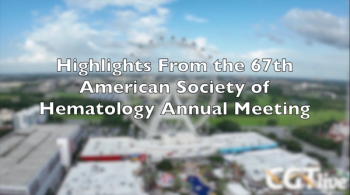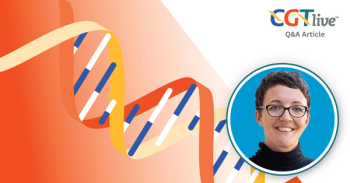
Angelman Syndrome Gene Therapy Shows Promising Efficacy in Higher-Dose Cohorts
Ultragenyx also exercised its option to acquire GeneTx, its partner in developing GTX-102.
Ultragenyx has acquired GeneTx after promising interim data, from a phase 1/2 trial (NCT04259281) on
“We are seeing encouraging early clinical activity across multiple domains and multiple measurements without any evidence of drug-related safety issues. The therapeutic effect should be further enhanced by starting at higher monthly loading doses that have already been shown to be tolerated,” Emil D. Kakkis, MD, PhD, chief executive officer and president, Ultragenyx, said in a statement. “These data combined with the excellent science of Dr. Scott Dindot, the inventor of GTX-102, have given us the confidence to exercise our option to acquire GeneTx at an earlier timepoint so that we can take the lead on advancing GTX-102 into late-stage development for Angelman syndrome.”
The open-label, dose-escalation phase 1/2 study has reported interim data from 2 patients in the US arm and 9 patients from the UK/Canada arm from new, higher-dose cohorts as outlined in a protocol amendment approved in the UK and Canada in May 2022.
Patients treated under this protocol were titrated individually. Six younger patients initiated dosing at 2.2 mg in cohort 4. Four reached the first pre-maintenance dose (PMD) visit at day 170 and received 7.5 mg doses, and 1 patient reached the second PMD dose at 10 mg. Four older patients initiated dosing at 5 mg in cohort 5. Three reached the first PMD dose and received 10 mg doses, and 1 had data available by the data cutoff. Patients in the US between ages 4 to 8 years old have received 4 monthly 2 mg doses of GTX-102.
READ MORE:
"I am convinced we are seeing evidence of a therapeutic effect with GTX-102 though it's still early in the study,” primary investigator Erick Sell, MD, associate professor of neurology and director, Angelman clinic, Children's Hospital of Eastern Ontario, added to the statement. “I am also encouraged by the improvements in quality of life that most of the families at my center are consistently reporting and believe that this could be a promising treatment for patients with Angelman syndrome."
Fourteen patients have been treated so far with GTX-102, 10 under the UK/Canada protocol and 4 under the US protocol. Altogether, 7 patients have received cumulative doses over 20 mg and 13 patients have over 147 days of exposure to treatment. Investigators have not observed any serious treatment-related adverse events (AEs) or AEs of any severity related to lower extremity weakness. Common AEs included vomiting (n = 5), COVID-19 infection (n = 4), upper respiratory infection (n = 3), and transient back pain (n = 2) in the UK/Canada arm. In the US arm, 2 patients had no AEs while 1 had had transient difficulty in sleeping and another experienced emesis, upper respiratory infection, and asymptomatic EBV hepatitis that resolved before the patient resumed dosing.
Cerebrospinal fluid (CSF) protein levels remained stable with the exception of 1 case of elevation in the UK/Canada protocol due to an asymptomatic reactivation of Varicella Zoster Virus. The protein normalized and the patient resumed dosing without any issues. Likewise, 1 participant in the US protocol had a single modestly elevated CSF protein that subsequently resolved.
In cohorts 4 and 5, investigators found that 7 of 9 patients improved in at least 3 of 5 domains on Clinical Global Impression of Change (AS Change Scale) and in overall score at day 128 from baseline. Six patients improved on at least 2 of 5 domains and in the overall score on Clinical Global Impression of Severity (AS Severity Scale) at day 128 from baseline. One patient from cohort 4 showed a 2 or 3-point improvement in AS Severity Scale across all 5 domains at the PMD assessment at day 170.
Both evaluable patients in the US armhad relative improvements from baseline in at least 3 of 5 domains and overall scores on AS Change Scale. Both patients also exhibited a decrease in at least 2 of 5 domains and overallAS Severity Scale scores at day 128 from baseline. Other measurements, including the Bayley Scales of Infant and Toddler Development, the Vineland-3 adaptive behavior scale, Observed Reported Communication Ability (ORCA), and Sleep, Behavior, Communication, Gross Motor and Fine Motor skillsalso showed improvements in patients in all arms.
“We are treating severely developmentally impaired individuals who are non-verbal and normally have a very slow rate of learning, making only minimal progress over years based on clinical observations and natural history studies,” primary investigator Elizabeth Berry-Kravis, M.D, PhD, professor, pediatrics, Rush University Medical Center, added to the statement. “The changes that we have seen clinically in less than a year in both the original five patients and the current patients, which are also captured by the AS Change and Severity Scales, may seem small but are truly important improvements, given the rate of developmental progress in Angelman syndrome.”
REFERENCE
Ultragenyx and GeneTxprovide program update on GTX-102 for Angelman Syndrome including promising interim data from phase 1/2 study. News release. Ultragenyx. July 18, 2022. Accessed July 19, 2022. https://ir.ultragenyx.com/news-releases/news-release-details/ultragenyx-and-genetx-provide-program-update-gtx-102-angelman
Newsletter
Stay at the forefront of cutting-edge science with CGT—your direct line to expert insights, breakthrough data, and real-time coverage of the latest advancements in cell and gene therapy.































